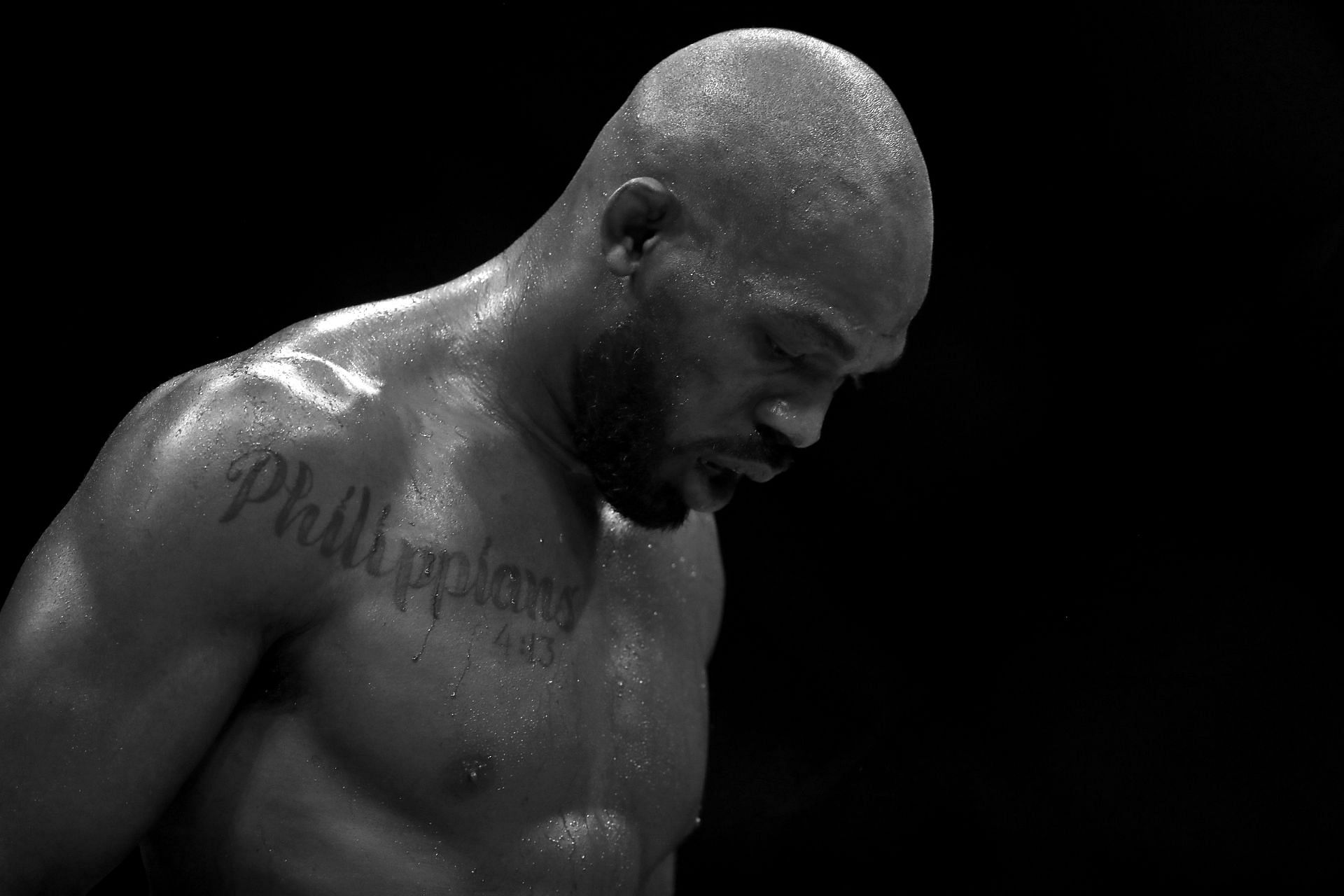
5 reasons why Jon Jones' heavyweight stint will be unsuccessful
Jon Jones is scheduled to make his triumphant return to the octagon at UFC 285. While 'Bones' has spent most of his career as a 205'er, his 29th professional fight will not be in the light heavyweight division. Instead, the former Jackson-Wink standout will be making his long-awaited heavyweight debut.
His opponent is Ciryl Gane, a former interim champion in the UFC heavyweight division. While many fans are expecting to see the dominant Jon Jones from the last decade, there are countless factors to consider. He will be competing in a new division against opponents who are different from anyone he has ever faced prior.
While he might succeed, there's also a strong chance that his heavyweight run will end in failure due to multiple reasons. Thus, this list compiles five reasons why Jon Jones' heavyweight stint will be unsuccessful.
#5. Jon Jones' wrestling depends on him being taller and longer than his opponents
Jon Jones was once hailed as a tremendous wrestler. This was partly due to the thrilling nature of his Greco-Roman takedowns and suplexes. However, the brunt of his skills depended on him being taller than his foes and having longer limbs than any of them.
In the clinch, 'Bones' used the leverage from his superior height to secure takedowns. Meanwhile, his double-leg takedowns relied on the length of his arms. With the longest reach in UFC history, the former 205'er was able to hook his hands behind his foe's legs even as they widened their base to stop the takedown.
This is what enabled him to outwrestle a more credentialed wrestler like Daniel Cormier in their initial encounter. Unfortunately, this is also why he has always struggled to outwrestle opponents who closely match him in terms of height and reach. Alexander Gustafsson is one such example.
In their first bout, Jones struggled to take the Swede down. This was due to Gustafsson being tall enough that widening his base successfully stopped his foe's takedowns. Defensively, this was also why Jones was taken down by 'The Mauler,' who was himself long enough to hook his hands behind Jones' legs.
At heavyweight, Jones will not have a size advantage over his opponents. Just as he struggled to take down Dominick Reyes and Alexander Gustafsson (besides their rematch after the Swede tore his groin), he will struggle to outwrestle 265'ers as well as stop their takedowns as effectively.
#4. His kicks rely on his size advantage
It's no secret that Jon Jones' success as a striker has always been due to his long limbs and height advantage. The former UFC light heavyweight champion often uses his reach to keep opponents on the end of his kicks. Anyone who tries to close the distance against him must get past a dangerous line of defense.
'Bones' uses push kicks and oblique kicks that target his opponent's lead knee. This not only stops opponents from moving forward due to his kicks acting as physical barriers, but it also causes significant damage to his foe's knees. Over time, this has led to his opponents becoming less mobile.
Additionally, it renders his foes unable to put a lot of weight on their lead leg, thus undercutting their punching power. While this works well against shorter opponents, it's not nearly as effective against adversaries who are of Jones' size or bigger.
Opponents who match his physical dimensions don't have to step in close and put themselves at risk. Thus, a major part of what ensures that Jones' kicks land is absent in the heavyweight division, where everyone is either as big or bigger than him.
#3. Jon Jones' defensive striking only works against shorter opponents
Just as Jon Jones' offensive striking benefits greatly from his height and reach advantage, so does his defensive striking. Against committed punchers, 'Bones' extended his lead hand while simultaneously raising his rear hand. His lead hand acts as a barrier to stop opponents from advancing.
Meanwhile, his rear hand is kept near his chin to block any punches that get past his lead hand. 'Bones' completes this line of defense by retreating from fighters to create space. This form of striking defense is highly effective against shorter fighters. At heavyweight, this won't be the case.
Jon Jones will be competing against opponents who are as tall or taller than him. They'll be long and tall enough to still reach him as he post-and-retreats. This happened frequently during his bouts against Alexander Gustafsson and Dominick Reyes. At 265 lbs with far more powerful foes, this could be truly troubling.
#2. Jon Jones might have ring rust
It's been three years since Jon Jones last stepped inside the octagon. Unfortunately, long absences from the UFC don't usually benefit returning fighters. No one would have a difficult time naming anyone other than Dominick Cruz, who returned to full form after a long absence from active competition.
While the former titleholder may have spent time away from the octagon improving his existing skill set, other elements are sure to have degraded. His timing and overall fitness levels will potentially be different. He hasn't been in an active fight against an opponent who is trying to finish him in almost three years.
Although he has been training this entire time and is in shape, he's not necessarily in "fight shape", as Georges St-Pierre once put it. Furthermore, his time away from fighting likely means that the game has passed him by. Fighters have evolved since Jones' last appearance.
But with no exposure to these fighters due to his three-year sabbatical, he'll encounter skill and techniques that he's unfamiliar with.
#1. There is ample footage of Jon Jones
UFC heavyweights have been preparing for Jon Jones' debut in their division for some time now. The former 205-pound champion announced his intention to move up in weight years ago. While 'Bones' is a familiar name in the promotion's history books, there is a new crop of 265'ers that are largely unfamiliar.
Jones has been a UFC fighter since 2008. There is an entire library of footage online from his past fights that coaches and rivals can pillage to study his strengths and weaknesses. His tendencies are well-documented and well-known. Thus, the heavyweights he'll encounter know what to prepare for.
Meanwhile, 'Bones' won't have as much footage of the top five heavyweights he'll encounter. Furthermore, since most of them are somewhat young, their skill sets are still evolving and changing, so they might be different from what is seen on tape by the time they step inside the octagon. The same cannot be said for Jones.

